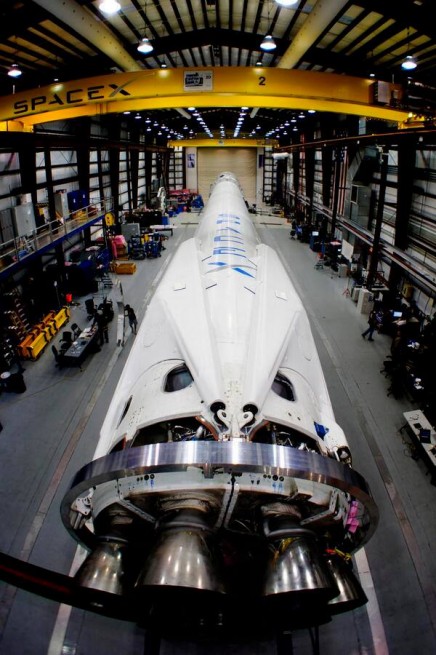April 23, 2014 – The latest resupply mission to the International Space Station (ISS) by SpaceX, Elon Musk’s private company, met several milestones last week. First it delivered almost 1,600 kilograms (3,500 pounds) of supplies which included a space garden, NASA’s Veg-01, for growing vegetables, and legs for the on board robot, Robonaut-2. But even more interesting was what was happening at the back end of the launch.
SpaceX has developed the Falcon-9, with a first stage booster that comes with a retractable landing apparatus and the ability to do a controlled descent to a soft landing after delivering payloads to low-Earth orbit. This has huge implications on spaceflight costs. Falcon-9 provides a fully recoverable first stage, a significant contributor to the total cost of getting payloads to orbit.
SpaceX is cheaper than any other launch carrier. It charges $56.5 million U.S., significantly under the $200 million which is the going rate from other providers. And that is before adding recoverability of the Falcon-9 first stage. With this capability cost to launch should drop even more.
Falcon-9 is a two-stage launch vehicle. The first stage includes nine rocket engines. When it achieves 80 kilometers (50 miles) altitude, the stage’s engines shut down and separation occurs. The second stage, a single-engine rocket ignites to carry its payload to orbit. The second stage is not recoverable but represents a much smaller cost in the space launch equation.
The first stage of the Falcon-9, however, does a controlled burn of three of its nine engines which slows its descent speed to just over Mach-1 (the speed of sound). The result, instead of the stage burning up and disintegrating it drops into the lower atmosphere fully intact. As it gets closer to the ground it is designed to refire a single engine to allow it to achieve zero speed and a soft landing.
In this latest mission, the controlled descent took place over the ocean with the stage landing on its surface. By 2015 SpaceX intends to make fully recoverable first-stage boosters part of its service with the ability to reuse them in future flights. Ultimately the company would like to fly the first stage back to a soft landing at a space port. There it would be treated just like an automobile. The operator would fill it again with propellant and send it back to space again.










